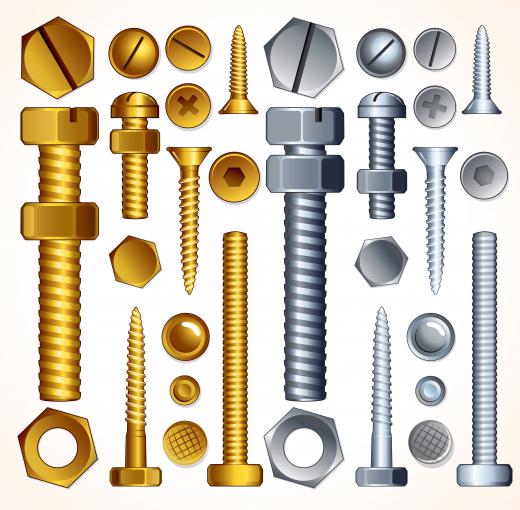A screw bolt is a type of fastener used for making mechanical connections between mating objects, to ensure that they are held together securely. These are very common and used to fasten many different types of objects, ranging from small electronic devices to very large-scale items, such as structural steel columns for bridges and commercial buildings. It is important to select the right type for each individual application.
A screw bolt is used in combination with a nut to attach and join two or more objects together. It has a large head on one end and a cylindrical shaft with an external thread, which is a helical structure that allows the screw to be advanced when rotated. The nut, which is usually hexagonal in shape, has a hole with an internal thread that matches the thread of the screw bolt.

When this bolt is inserted and rotated into a nut, the screw advances. Screw bolts are normally tightened and loosened by applying torque to the nut. A high amount of clamping force can be generated when the screw and nut are tightened against two or more objects located between the screw head and nut surfaces. The mating surfaces between the screw and nut resist the force being applied by the screw, and help to prevent the mechanical connection from loosening over time.

The type and size of bolt selected for a particular application depends upon the applied stresses and environment that the mechanical connections will be exposed to. Screw bolts are manufactured using carbon steel, stainless steel, or brass for corrosion resistance; metal alloys for high strength applications; and even plastic materials. A variety of screw heads are available to allow various tools to be used while tightening or loosening or to meet other requirements, such as the need for a low profile. Examples of commonly used heads are the hex head, which has a hexagonal shape for use with a wrench; the eye bolt, which has a looped head; and the carriage head bolt, which is dome-shaped with a short square section underneath the head.
The terms screw bolt and screw are often used to describe the same type of fastener. While there is no clearly defined difference between the two, it is generally understood that a screw bolt is used in combination with a nut that is tightened to secure the connection. A screw is directly tightened into a threaded hole to secure a mechanical connection. Screw bolt is also frequently used when describing larger size fasteners.
